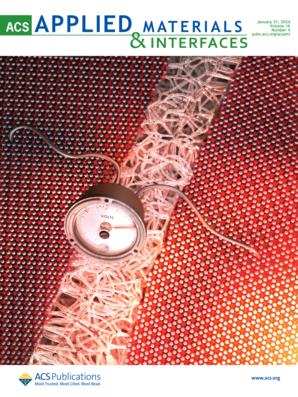Radiation-Hardened Position-Sensitive Photodetector Based on Undoped 4H-SiC
IF 8.3
2区 材料科学
Q1 MATERIALS SCIENCE, MULTIDISCIPLINARY
引用次数: 0
Abstract
Position-sensitive photodetectors (PSDs) have been widely used for seamless, high-resolution light tracking, but applications such as aerospace and prolonged field operations require stable performance in extreme environments. Conventional PSDs, typically based on the lateral photovoltaic effect of silicon or other semiconductor junctions, are prone to radiation damage and material degradation, limiting their reliability under harsh conditions. Silicon carbide (SiC), with its wide bandgap, high mobility, low defect density, and strong resistance to radiation damage, offers a promising alternative for developing robust detectors. In this work, we present a PSD based on undoped 4H-SiC, designed with a simple vertical structure that eliminates the need for complex multi-interface architectures. The device demonstrates excellent performance, including a light on–off ratio exceeding 103 under sub-milliwatt illumination, spatial resolution of ∼0.1 μm, and fast response times of ∼10 μs (rise) and ∼6.3 μs (fall). It also exhibits remarkable stability under γ-ray irradiation (300 krad) with minimal photocurrent variation, making it suitable for accurate position tracking in radiation-prone environments. This work highlights the potential of 4H-SiC-based PSDs for advanced sensing applications that demand both high performance and resilience in extreme environments.

求助全文
约1分钟内获得全文
求助全文
来源期刊

ACS Applied Materials & Interfaces
工程技术-材料科学:综合
CiteScore
16.00
自引率
6.30%
发文量
4978
审稿时长
1.8 months
期刊介绍:
ACS Applied Materials & Interfaces is a leading interdisciplinary journal that brings together chemists, engineers, physicists, and biologists to explore the development and utilization of newly-discovered materials and interfacial processes for specific applications. Our journal has experienced remarkable growth since its establishment in 2009, both in terms of the number of articles published and the impact of the research showcased. We are proud to foster a truly global community, with the majority of published articles originating from outside the United States, reflecting the rapid growth of applied research worldwide.
 求助内容:
求助内容: 应助结果提醒方式:
应助结果提醒方式:


